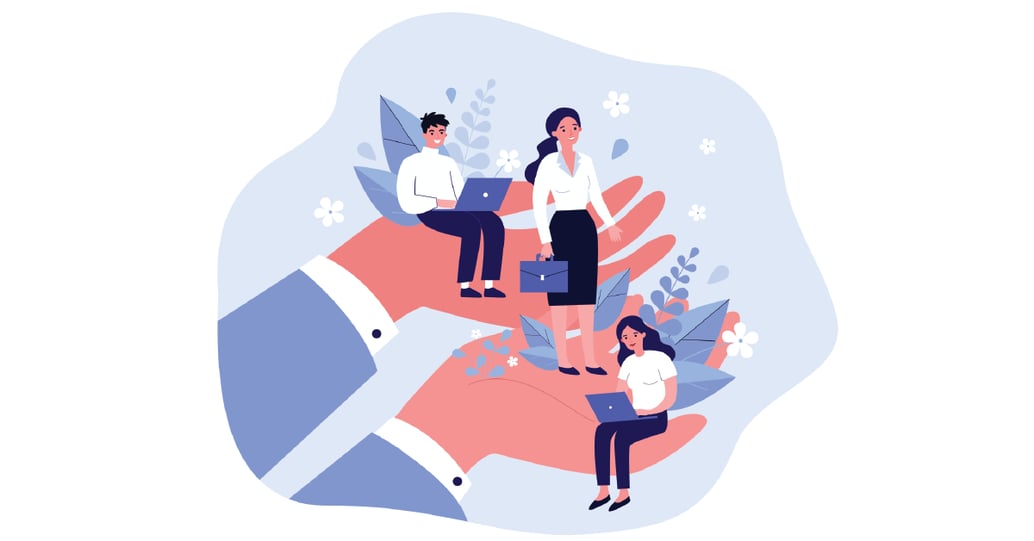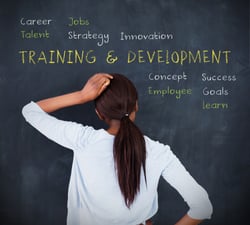Integrate Employee Wellbeing With Learning and Development Training

Recent research from professional development search engine findcourses.com has shown that learning and development training (L&D) and employee well-being go hand-in-hand.
It’s no trade secret that employee wellness is directly tied to the profitability, productivity, and talent retention rate of companies large and small. As a wellness professional, chances you’re already well-versed in pitching corporate clients across industries on the importance of employee well-being programs. Furthermore, the market is flush with corporations offering important health and wellness benefits as perks to their employees, from Amazon to Netflix to Bank of America.

Employee well-being, however, is too often considered a separate or additional perk to L&D. Considering these two vital aspects of professional life in silos may be restricting your opportunities to help your clients keep their employees happy and healthy. According to the 2019 L&D report, integrating employee health with L&D training may give you the competitive edge necessary to stand out from the crowd, and lead clients to take on new and innovative approaches to employee health.
Read on to discover how training professionals are weaving wellness into their L&D programs, and how you can offer your clients well-rounded, technology-based wellness programs that can integrate seamlessly with L&D. By promoting L&D and wellness as one unit, you can increase your clients’ employee retention, productivity, and profitability as well as your own competitive advantage in an already crowded market. All while keeping employee wellness at the core of your mission!
Maximizing Clients’ Retention And Recruitment Potential
Since wellness is often promoted by corporations as an additional employee perk, introducing your clients to the idea of a combined wellness-professional training program will not only help them use training as an employee retention tool but also attract the best new talent.
According to Rebecca Edwards, the Director of Learning and Development at Homeserve, “We’re seeing less vertical ladder moves now. A lot more people want to have a wider career, and expand their knowledge and experience in very different areas.” Given the overall shift from vertical to horizontal career moves, driving an L&D program driven by health and wellness means potential new hires will view your clients’ organizations as career stops for them to grow, develop, and be valued over the long term.
For Clare Walsh, Head of People at Manning Gottlieb OMD, an integrated approach has proved to be the most effective. “It’s a fantastic way for us to articulate our desire to develop our employees on both a personal and professional level,” says Walsh. By bringing employee health, (traditionally considered a ‘personal’ matter when framed as a perk), to the center of your corporate clients’ L&D programs, they’ll attract and retain the best of their potential talent pool.
The report found that companies tying internal promotion and L&D are 22% more likely to have highly satisfied employees and a greater retention rate. A combined approach will help your clients put retention, wellness, and professional development into one harmonious recruitment/retention loop.
The Industry Is Dynamic, You Should Be Too
Whether you’re a well-established wellness professional with a healthy client roster or just starting out in the field, the dynamism of the industry means seeking out the next best innovation to stand out from the competition is a key way to foster your own, and your client's success.
Technology is a natural place to seek innovation out, as organizations across industries are embracing the power of tech. The 2019 L&D report from findcourses.com found that companies with revenue growth are more than twice as likely to have innovative technologies like artificial intelligence in their L&D offering. In order to stay relevant to your client's needs you’ll need to understand how to take advantage of scalable and adaptable technologies to maximize the potential of your offerings to clients, and your business overall.
If you can show your clients that you’re up-to-date with the latest and greatest training techniques and technologies, they’ll be more apt to embrace your wellness program over your competitors. 35% of employees reported being less than satisfied with their organization’s L&D offering. Staying abreast of industry changes and tools is not only the right strategy to keep your business thriving, clients prioritizing employee satisfaction will be seeking your dynamism out.
This all sounds easy on paper, but won’t a combined wellness-L&D program requires working with multiple technological systems? Luckily, the technology is out there to help you help your clients. Tools like CoreHealth have performed over 100 seamless integrations since they’ve been in business, and help providers around the world avoid technology meltdowns. Proposing a program to fit within a client’s existing L&D program may generate lots of questions, but if you’re taking advantage of the right technological tools you’ll have in-depth answers at the ready.
The End Result
The statistics are convincing and the tools are out there, but one key question remains: What does an integrated health and wellness/L&D program actually look like? Manning Gottlieb OMD’s program ‘The Gym’ has struck a highly effective balance between professional skills development and promoting physical and mental wellness.
“Our approach is simple,” says Walsh, “We need our people to be physically and mentally healthy for them to get the most from other areas of training, and to produce the best work for our clients.” ‘The Gym’ has four distinct areas that all employees undergo: Bootcamps, Core Strengthening, Personal Training and The Spa. The first three areas focus on key professional learning like micro-learning, core skills development and coaching and mentoring. The Spa, however, allows employees to prioritise their mental and physical fitness by offering yoga and pilates classes, stress reduction courses, massages, and more.
By using employee health and wellness to drive their L&D offering, Manning Gottlieb OMD’s ‘The Gym’ kills two birds with one stone by combining physical and professional skills training in one integrated program. With too many balls in the air, your clients’ L&D programs may have completely different goals than your proposed wellness program.
Work with your clients to understand their specific needs, and find ways to integrate your expertise with their existing professional development scheme. Producing results makes for happier clients, and happy clients tend to come back for more. Combining L&D with employee well-being may be new territory for you as a wellness provider, but also the silver bullet you’ve been looking for to increase your competitive advantage.
About The Author
Max Maccarone
Max Maccarone is a content editor for the higher education portal educations.com and professional development search engine findcourses.co.uk. Originally from Canada, Max relocated to Stockholm after graduating from York University in Toronto. An avid traveller, Max is dedicated to creating diverse and engaging learning and development content for a wide-range of publications.


